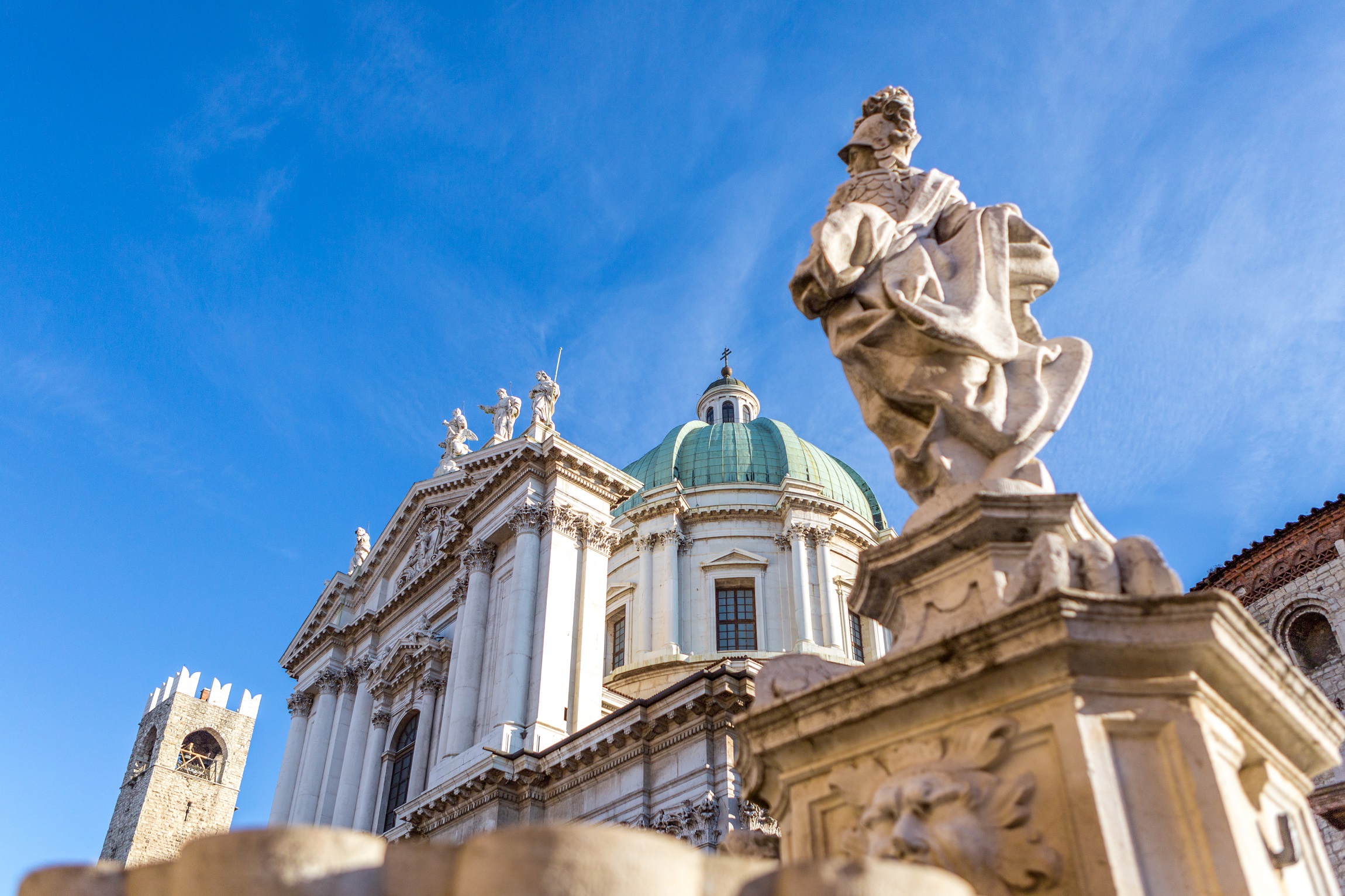Brescia is a city rich in culture, history, and art which is increasingly coming under the spotlight in the international tourism landscape: come with us and learn about 12 things worth seeing! World-famous points of interest and hidden gems just await to be discovered during your stay.
Let’s start our journey!
1) Santa Giulia, the city museum
A historically and artistically relevant site, today the Santa Giulia complex is the city’s main museum and a true treasure trove. From the 9th-century Desiderius Cross, one of the most grandiose jewelry works in the world, to the incredible frescoes of the Coro delle Monache, passing through the remains of the old Roman villas and the beautiful interiors of the Basilica of San Salvatore, it is no surprise that Santa Giulia is one of the most visited attractions in Brescia.


Together with the Capitolium archaeological area and the Monastery of San Salvatore, the museum is part of the UNESCO site in the heart of ancient Brixia. It is also the venue for important temporary exhibitions.
- Via dei Musei, 81/b – tel. +39 030 2977834/833
- bresciamusei.com
- Paid admission
Learn more about the Santa Giulia Museum.
2) UNESCO World Heritage Archaeological site
In 2011, the Roman archaeological area in Brescia was inscribed on the World Heritage list. The UNESCO site includes the archaeological area of Piazza del Foro, the Capitolium with the Winged Victory, the Republican sanctuary, the ancient theater, the Roman Basilica, and the monumental complex of San Salvatore – Santa Giulia.


- Via dei Musei, 55 – tel. +39 030 8174200
- www.bresciamusei.com
- Ingresso a pagamento
Scopri di più sull’area archeologica e Piazza del Foro.
3) Il Castello di Brescia
Grande fortezza costruita sul Colle Cidneo tra il ‘300 e il ‘500 in posizione strategica con vista dominante sulla città, il Castello di Brescia è un luogo particolarmente caro ai bresciani.


It’s a sought-after destination for relaxing walks surrounded by green areas and stunning views. The castle contains the oldest Italian public astronomic observatory, a beautiful model train display, the “Luigi Marzoli” Arms Museum, and the Leonessa d’Italia Risorgimento Museum.
Many events are organized throughout the year: a historical re-enactment, craft markets, and the rich summer schedule with We love Castello. A not-to-miss experience is the visit to the dungeons with Associazione Speleologica Bresciana.
The castle is conveniently served by a parking lots and can be easily reached on foot with a 15-minute walk from Brescia’s historic center.
- Via del Castello – tel. +39 030 2977834/833
- Park: Free admission; Arms Museum: Paid admission.
Learn more about the Castle of Brescia.
4) Queriniana Library
The most illustrious library in Brescia owes its name to Cardinal Querini, who founded it in 1747 in the former Bishop’s Palace in Via Mazzini. Since then, the Queriniana Library has continued to enrich its collection and today boasts over 500,000 volumes including 1,158 incunables, 8,386 “cinquecentine” (books printed in the 16th century), and 10,000 manuscripts with magnificent examples of illuminated codes.
Severely damaged during World War II, the building was subsequently repaired and modified to adjust to a more modern concept of library layout. Intense preservation efforts were made to maintain the building’s original solemn appearance. Today, the Queriniana Library is still the point of reference for Brescia’s culture and beyond.
- Via dei Musei, 1 – tel. +39 030 2978201/8210
- https://queriniana.comune.brescia.it/
- Free admission
Learn more about the Queriniana Library.
5) Piazza Paolo VI
Also known as “Piazza Duomo”, this square contains the buildings that were the symbols of the town’s civic and religious power in the Middle Ages: the Broletto, seat of the Prefecture and some municipal offices, with its historic Torre del Pégol tower, and the “Duomo Vecchio” (Old Cathedral), a rare example of Romanesque architecture with circular layout and splendid works by Romanino, Moretto, and Cossali. In the middle of the square stands the “Duomo Nuovo” (New Cathedral), built starting from 1604 and completed in 1825 by Vantini.


The square is dotted with nightlife spots and during the year hosts several cultural initiatives. It is also a very popular area for those who love strolling in the historic center.
Learn more about Piazza Paolo VI, the square with two cathedrals.
6) Piazza Loggia
Characterized by a splendid combination of different styles but with a clear Venetian influence, Piazza Loggia is one of Brescia’s beating hearts. West of the square is the imposing Palazzo Loggia: built between 1492 and 1570 with impulses from Palladio and Sansovino, the palace is now the seat of the municipal government.
On the east side, the Clock Tower with its old astronomical clock marks the start of the elegant porches, the core of the city’s shopping area. One noteworthy element on the south side (toward Piazza Vittoria) is the facade of Monte di Pietà (pawnshop), displaying portions of Roman gravestones.


Piazza Loggia is a highly sought-after venue for summer concerts featuring the most acclaimed international artists.
Learn more about Piazza Loggia.
7) Old Carmine district
Characterized by old alleys and stunning corners, the Carmine district just off Piazza Loggia is one of the nightlife spots that youngsters like best. Served by the San Faustino light rail stop, the district is dotted with beautiful churches, historical buildings, osterias, and small bars for an after dinner drink. During the day, the district is very popular among university students.
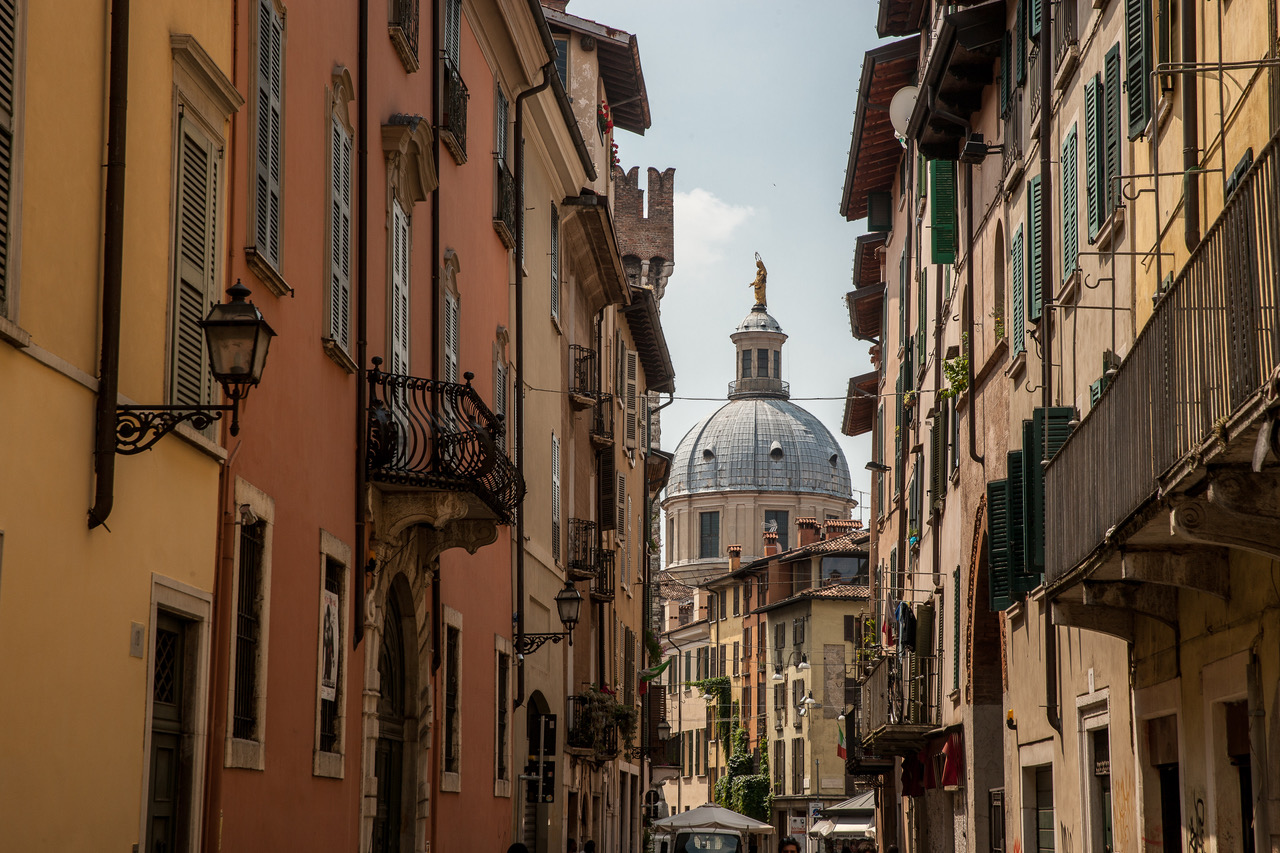

Learn more about the old Carmine district.
8) Church of San Francesco of Assisi
Built in the 13th century in an evocative intersection of old alleys, the church dedicated to St. Francis of Assisi has a Late Romanesque exterior with a large central rose window. The three naves are richly decorated with frescoes and the side altars display noteworthy works by Moretto and Romanino.
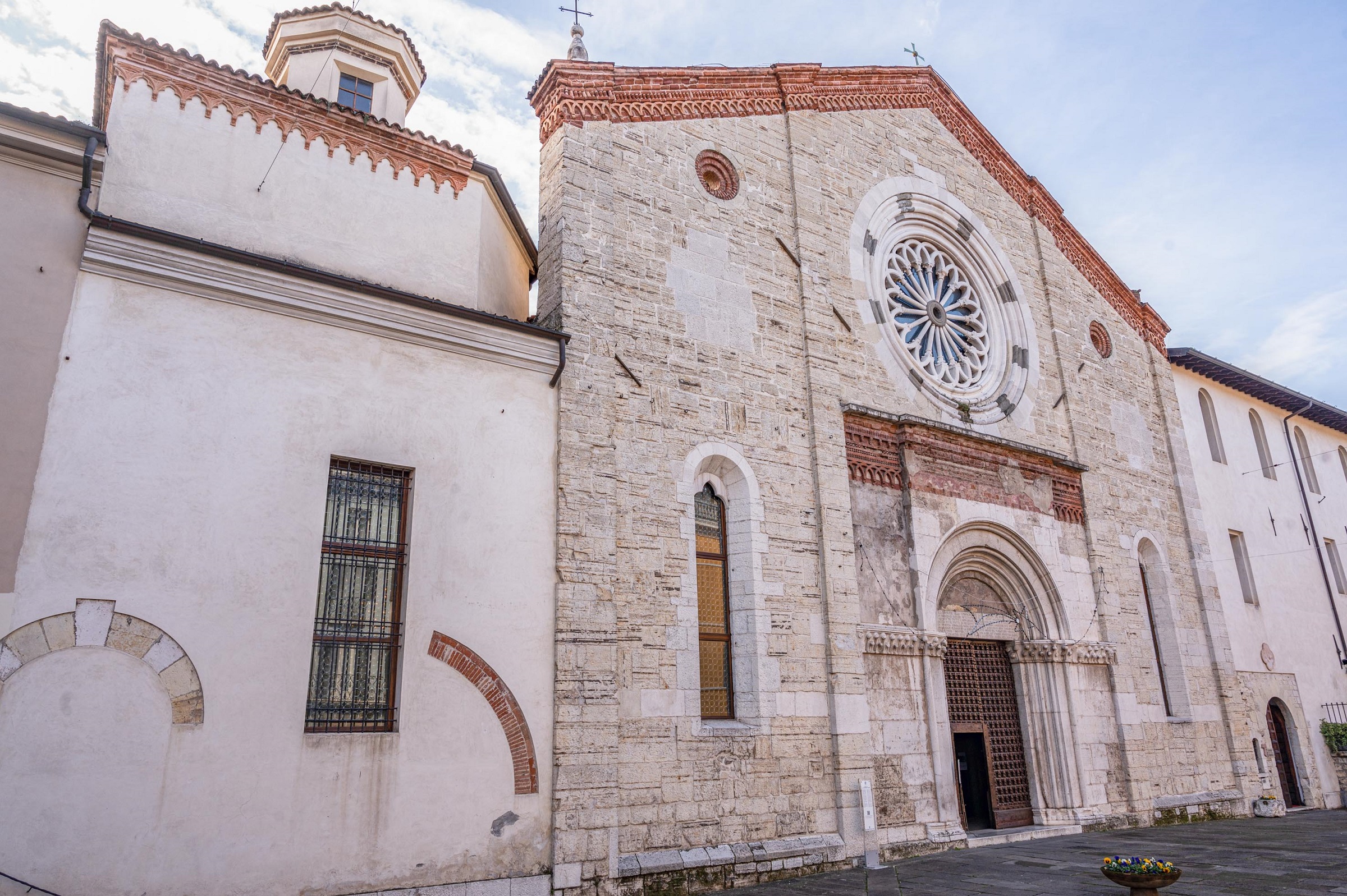

The “Madonnina” Cloister is worth a visit, as well as the main cloister with Verona red marble columns. The side door on the right of the facade is the entrance to the famous mechanical nativity scene created by the Franciscan monks and open during the Christmas holidays.
- Via S. Francesco – tel. +39 030 2926701
- Free admission
9) Piazza Vittoria
Joining the triplet of large squares in Brescia together with Piazza Loggia and Piazza Paolo VI, Piazza Vittoria is an ideal space for a walk under the sky in the heart of the city. It’s characterized by the austere, imposing architectural lines of the Fascist era. Noteworthy buildings overlooking the square are the Post Office and, on the right side, one of the first skyscrapers in Italy. On the east and west sides, there are two colonnades with commercial activities which create a harmonious symmetric effect.


Animated by events and food markets, Piazza Vittoria has a large underground parking lot and is served by the namesake light rail stop.
Learn more about Piazza Vittoria.
10) Teatro Grande
Built in 1810 to replace Accademia degli Erranti, Teatro Grande is considered one of the most important theaters in Italy. The Neoclassical facility has five levels of loges and frescoed galleries enriched by stuccoes and gilded elements. The magnificence of the main hall is rivalled by the splendid elaborate frescoes, gilded stuccoes, and mirrors of the Ridotto (foyer). It is one of the finest examples of Rococo in Brescia.


During the summer, the theater organizes guided tours of the building. It is a not-to-miss opportunity to learn about the secrets of this incredible place of culture, declared national monument. For information on this Grand Tour, visit the official website.
- Via Paganora, 19/a – tel. 030 2979311
- teatrogrande.it
- Paid guided tours
Learn more about Teatro Grande.
11) Palazzo Tosio
This luxurious mansion designed by Rodolfo Vantini was commissioned by Mr. and Mrs. Tosio, who moved their extensive art collection here and created a true private library and art gallery.
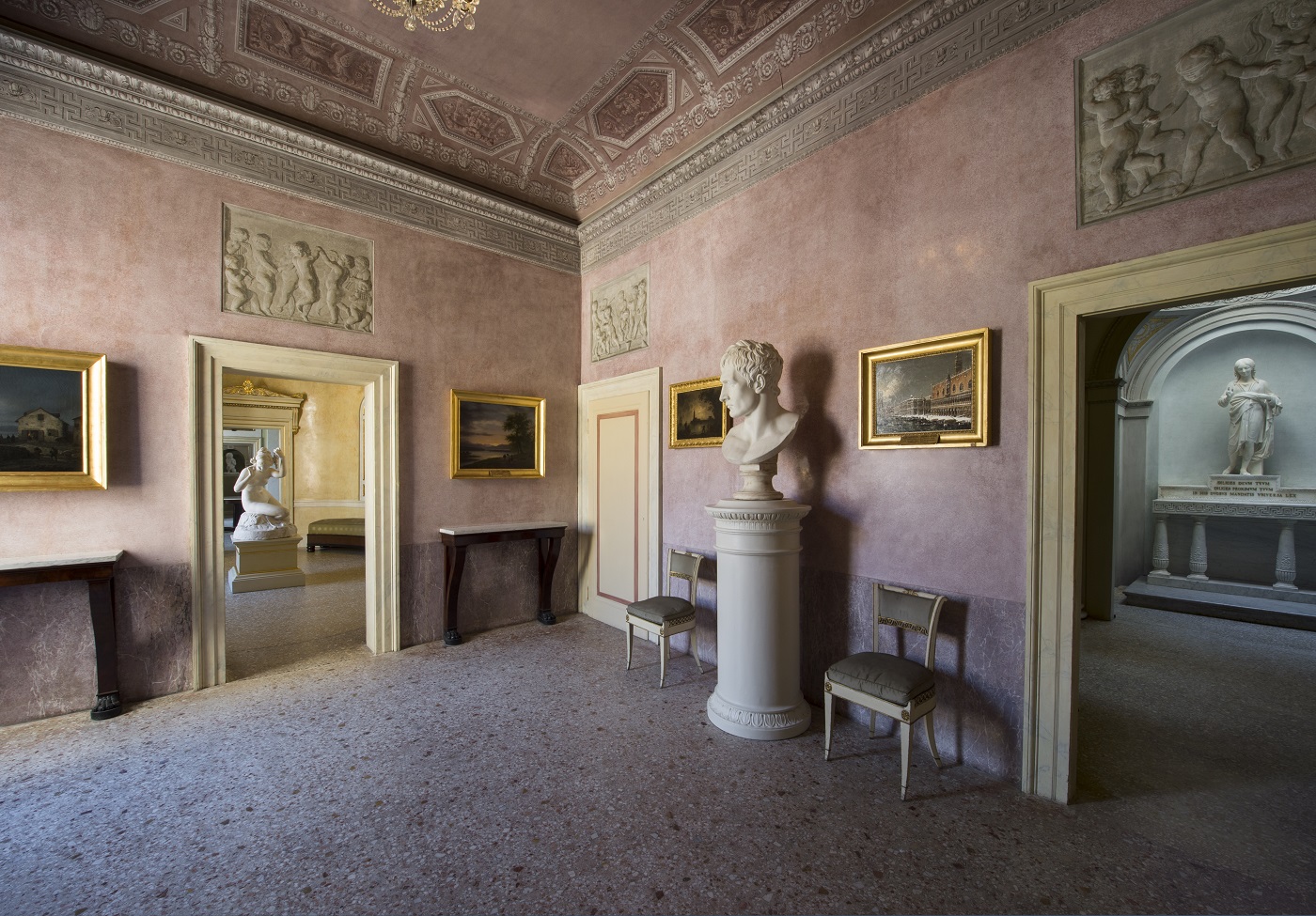

- Via Tosio, 12
- Guided tours only. Please reserve on ateneo.brescia.it
- Free admission – visit upon request
Learn more about Palazzo Tosio.
12) Tosio Martinengo Art Gallery
Raphael, Foppa, Savoldo, Moretto, Romanino, Lotto, Ceruti, Hayez, Canova: these are only some of the artists whose works enrich the Tosio Martinengo Art Gallery.
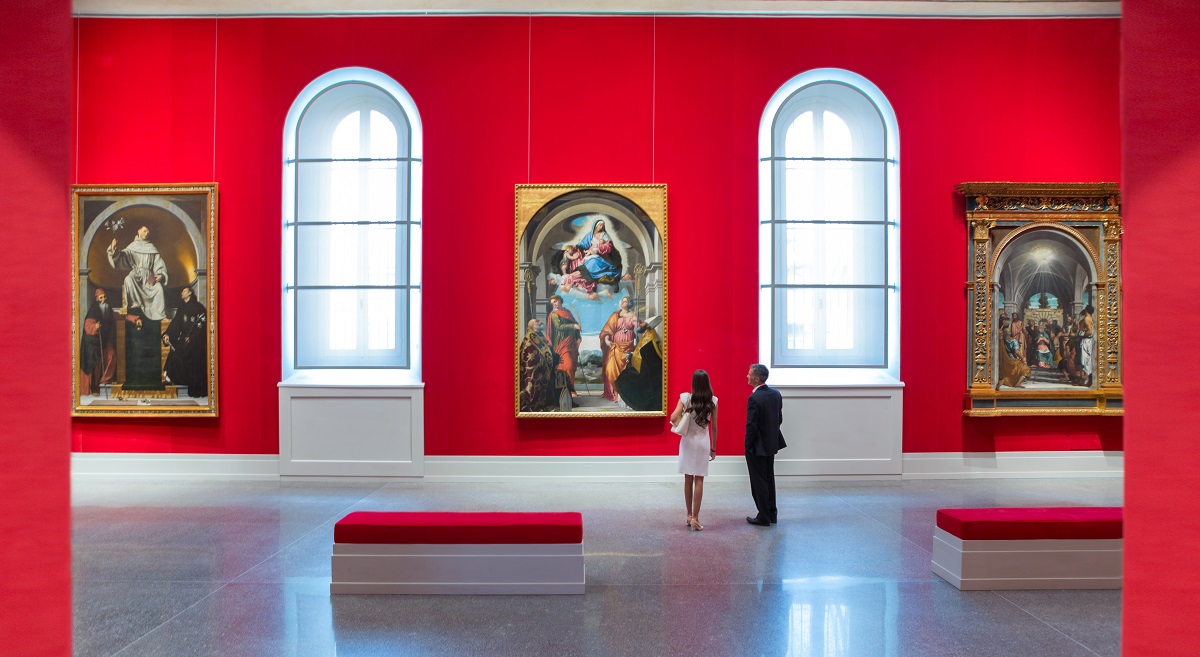

The collection ranges from Late Gothic to early 19th century and includes paintings, sculptures, jewelry, enameled objects, medals, and a large room dedicated to the most important Brescian Renaissance painters. The Tosio Martinengo Art Gallery is considered one of the most noteworthy art galleries in northern Italy. The visit includes 21 rooms with dramatic decor.
- Piazza Moretto – tel. +39 030 2977833/834
- bresciamusei.com
- Paid admission
Learn more about the Tosio Martinengo Art Gallery.
Click here to download all the cultural itineraries in Brescia.
Request information




